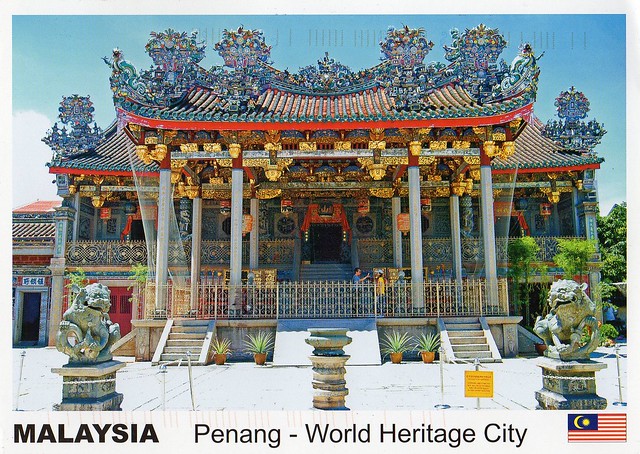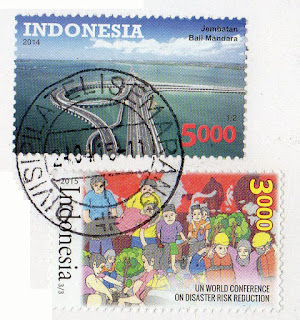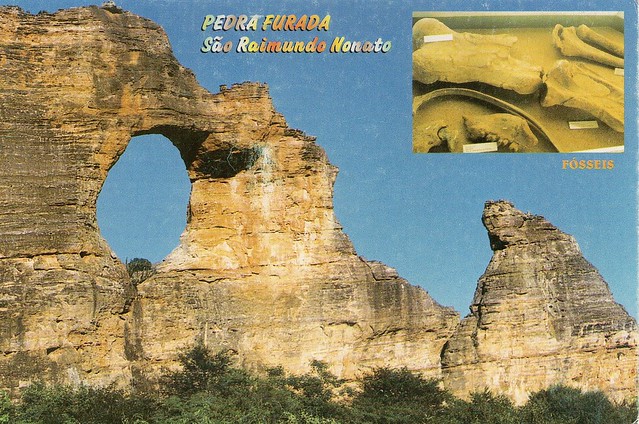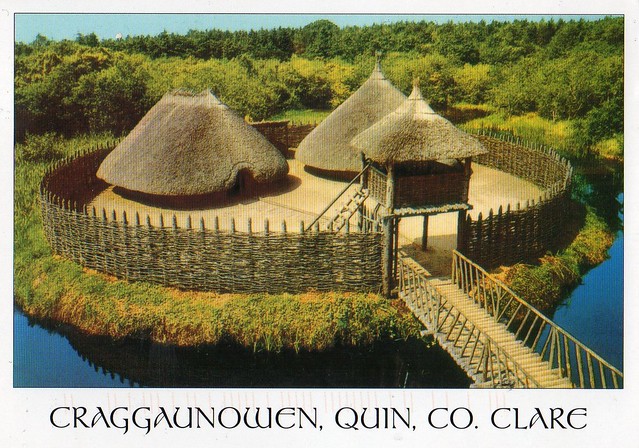This is the Hairat Khan Jahan Ali Nine Gambuj Mosque. I have been trying to work out whether it's one of the mosques of the Unesco site 'Historic Mosque City of Bagerhat', but so far with no luck. If anyone here knows, please let me know, I would be really grateful!
Wednesday 12 August 2015
Hairat Khan Jahan Ali Nine Gambuj Mosque, Bangladesh
Today's last card is from a swap with Md. Imran in Bangladesh. Thank you so much, this is beautiful!
This is the Hairat Khan Jahan Ali Nine Gambuj Mosque. I have been trying to work out whether it's one of the mosques of the Unesco site 'Historic Mosque City of Bagerhat', but so far with no luck. If anyone here knows, please let me know, I would be really grateful!
This is the Hairat Khan Jahan Ali Nine Gambuj Mosque. I have been trying to work out whether it's one of the mosques of the Unesco site 'Historic Mosque City of Bagerhat', but so far with no luck. If anyone here knows, please let me know, I would be really grateful!
Penang, Malaysia
I received this postcard from Matthew in Malaysia through the SouthEast Asia RR on the Postcrossing forum. I was honestly quite surprised to receive this - the value of the stamp is way above the rate of sending a postcard in Malaysia. It is lovely, though, thank you a million again, Matthew!
George Town (also less commonly spelt as Georgetown) is the capital and largest city of the state of Penang in Malaysia.
George Town is known as the city of condos and apartments in Malaysia like Singapore and Hong Kong. Trishaws and foreigners are also seen in Penang like in Malacca. The Hip Hop Open Air and Rapid Penang buses are the public transports for Penang. George Town is also the district capital of North East Penang Island.
Named after Britain's King George III, George Town is located on the north-east corner of Penang Island. The inner city has a population of 510,996 and the metropolitan area known as George Town Conurbation which consists of Jelutong, Sungai Pinang, Sungai Nibong, Glugor, Air Itam, Tanjung Bungah and Tanjung Tokong have a combined population of 2,251,792, making it the second largest metropolitan area in Malaysia.
The settlement was declared a city in 1957 by Her Majesty Queen Elizabeth II. In 2015, Penang island, on which George Town is located, was also awarded city status.
The inner city of George Town is a UNESCO World Heritage Site.
Khoo Kongsi is a large Chinese clanhouse with elaborate and highly ornamented architecture. It is located in Cannon Square in the heart of the oldest part of the city of George Town, hidden amidst the crowded gridiron of terrace houses and shophouses.
George Town (also less commonly spelt as Georgetown) is the capital and largest city of the state of Penang in Malaysia.
George Town is known as the city of condos and apartments in Malaysia like Singapore and Hong Kong. Trishaws and foreigners are also seen in Penang like in Malacca. The Hip Hop Open Air and Rapid Penang buses are the public transports for Penang. George Town is also the district capital of North East Penang Island.
Named after Britain's King George III, George Town is located on the north-east corner of Penang Island. The inner city has a population of 510,996 and the metropolitan area known as George Town Conurbation which consists of Jelutong, Sungai Pinang, Sungai Nibong, Glugor, Air Itam, Tanjung Bungah and Tanjung Tokong have a combined population of 2,251,792, making it the second largest metropolitan area in Malaysia.
The settlement was declared a city in 1957 by Her Majesty Queen Elizabeth II. In 2015, Penang island, on which George Town is located, was also awarded city status.
The inner city of George Town is a UNESCO World Heritage Site.
Khoo Kongsi is a large Chinese clanhouse with elaborate and highly ornamented architecture. It is located in Cannon Square in the heart of the oldest part of the city of George Town, hidden amidst the crowded gridiron of terrace houses and shophouses.
Labels:
2015,
cancellations,
george town,
malaysia,
penang,
RR,
stamps,
year of the sheep
Greetings from Indonesia
I somehow ended up with two 'Greetings from' Indonesia cards. Ooops. I don't really mind, though, as they are both lovely - beautiful stamps and gorgeous decorations on the back. ^_^
I had to look up the symbol in the middle as I seem to remember there was initially a picture of a coconut tree there but it was changed. This is what I found, and I think it's pretty cool:
Bhinneka Tunggal Ika is the official national motto of Indonesia. The phrase is Old Javanese translated as "Unity in Diversity". It is inscribed in the Indonesian national symbol, Garuda Pancasila (written on the scroll gripped by the Garuda's claws), and is mentioned specifically in article 36A of the Constitution of Indonesia. The Garuda is a mythical bird and the mount of Lord Vishnu.
It is a quotation from an Old Javanese poem Kakawin Sutasoma, written by Mpu Tantular during the reign of the Majapahit empire sometime in the 14th century, under the reign of King Rājasanagara, also known as Hayam Wuruk. Kakawin contains epic poems written in metres.
This poem is notable as it promotes tolerance between Hindus (especially Shivaites) and Buddhists.
...and the stamps on the second card:
I had to look up the symbol in the middle as I seem to remember there was initially a picture of a coconut tree there but it was changed. This is what I found, and I think it's pretty cool:
Bhinneka Tunggal Ika is the official national motto of Indonesia. The phrase is Old Javanese translated as "Unity in Diversity". It is inscribed in the Indonesian national symbol, Garuda Pancasila (written on the scroll gripped by the Garuda's claws), and is mentioned specifically in article 36A of the Constitution of Indonesia. The Garuda is a mythical bird and the mount of Lord Vishnu.
It is a quotation from an Old Javanese poem Kakawin Sutasoma, written by Mpu Tantular during the reign of the Majapahit empire sometime in the 14th century, under the reign of King Rājasanagara, also known as Hayam Wuruk. Kakawin contains epic poems written in metres.
This poem is notable as it promotes tolerance between Hindus (especially Shivaites) and Buddhists.
...and the stamps on the second card:
Serra da Capivara National Park, Brazil
A nice Unesco card I received last month. My Unesco collection has been growing again and I reckon it would be even bigger if I could afford more swaps.
Serra da Capivara National Park is a national park in the Northeastern region of Brazil. It has many prehistoric paintings. The park was created to protect the prehistoric artifacts and paintings found there. It became a World Heritage Site in 1991. Its head archaeologist is Niède Guidon. Its best known archaeological site is Pedra Furada.
It is located in northeast state of Piauí. It falls within the municipal areas of São Raimundo Nonato, São João do Piauí, Coronel José Dias and Canto do Buriti. It has an area of 1291.4 square kilometres. The area has the largest concentration of prehistoric sites in the Americas. Scientific studies confirm that the Capivara mountain range was densely populated in the pre-Columbian Era.
Serra da Capivara National Park is a national park in the Northeastern region of Brazil. It has many prehistoric paintings. The park was created to protect the prehistoric artifacts and paintings found there. It became a World Heritage Site in 1991. Its head archaeologist is Niède Guidon. Its best known archaeological site is Pedra Furada.
It is located in northeast state of Piauí. It falls within the municipal areas of São Raimundo Nonato, São João do Piauí, Coronel José Dias and Canto do Buriti. It has an area of 1291.4 square kilometres. The area has the largest concentration of prehistoric sites in the Americas. Scientific studies confirm that the Capivara mountain range was densely populated in the pre-Columbian Era.
Craggaunowen Project, Quin, Co. Clare, Ireland
A lovely postcard I received from Ireland earlier this year.
Info from the back of the card:
16th century Craggaunowen Castle has been restored and now contains part of the Hunt Collection of medieval art objects. In the grounds of the castle is a reconstructed Crannog - a Bronze Age lake dwelling and a ring fort - a reconstruction of a farmer's house of the 4th century. Archaeological date from many sources were used in the reconstruction and furnishing of both projects.
Info from the back of the card:
16th century Craggaunowen Castle has been restored and now contains part of the Hunt Collection of medieval art objects. In the grounds of the castle is a reconstructed Crannog - a Bronze Age lake dwelling and a ring fort - a reconstruction of a farmer's house of the 4th century. Archaeological date from many sources were used in the reconstruction and furnishing of both projects.
Pilgrimage Church of Wies, Germany
Getting *really* behind with this blog again so time for an update. ...although I should probably be outside instead as it's such a gorgeous, sunny, warm day. Uh oh...
Today's first card is from the Unesco tag on the Postcrossing forum.
The Pilgrimage Church of Wies is an oval rococo church, designed in the late 1740s by Dominikus Zimmermann, who lived nearby for the last eleven years of his life. It is located in the foothills of the Alps, in the municipality of Steingaden in the Weilheim-Schongau district, Bavaria, Germany.
It is said that, in 1738, tears were seen on a dilapidated wooden figure of the Scourged Saviour. This miracle resulted in a pilgrimage rush to see the sculpture. In 1740, a small chapel was built to house the statue but it was soon realized that the building would be too small for the number of pilgrims it attracted, and so Steingaden Abbey decided to commission a separate shrine. Many who have prayed in front of the statue of Jesus on the altar have claimed that people have been miraculously cured of their diseases, which has made this church even more of a pilgrimage site.
Construction took place between 1745 and 1754, and the interior was decorated with frescoes and with stuccowork in the tradition of the Wessobrunner School. "Everything was done throughout the church to make the supernatural visible. Sculpture and murals combined to unleash the divine in visible form".
There is a popular belief that the Bavarian government planned to sell or demolish the rococo masterpiece during the secularization of Bavaria at the beginning of the 19th century, and that only protests from the local farmers saved it from destruction. Available sources, however, document that the responsible state commission clearly advocated the continuation of Wies as a pilgrimage site, even in spite of economic objections from the abbot of Steingaden.
The Wieskirche was added to the UNESCO World Heritage List in 1983 and underwent extensive restoration between 1985 and 1991.
Today's first card is from the Unesco tag on the Postcrossing forum.
The Pilgrimage Church of Wies is an oval rococo church, designed in the late 1740s by Dominikus Zimmermann, who lived nearby for the last eleven years of his life. It is located in the foothills of the Alps, in the municipality of Steingaden in the Weilheim-Schongau district, Bavaria, Germany.
It is said that, in 1738, tears were seen on a dilapidated wooden figure of the Scourged Saviour. This miracle resulted in a pilgrimage rush to see the sculpture. In 1740, a small chapel was built to house the statue but it was soon realized that the building would be too small for the number of pilgrims it attracted, and so Steingaden Abbey decided to commission a separate shrine. Many who have prayed in front of the statue of Jesus on the altar have claimed that people have been miraculously cured of their diseases, which has made this church even more of a pilgrimage site.
Construction took place between 1745 and 1754, and the interior was decorated with frescoes and with stuccowork in the tradition of the Wessobrunner School. "Everything was done throughout the church to make the supernatural visible. Sculpture and murals combined to unleash the divine in visible form".
There is a popular belief that the Bavarian government planned to sell or demolish the rococo masterpiece during the secularization of Bavaria at the beginning of the 19th century, and that only protests from the local farmers saved it from destruction. Available sources, however, document that the responsible state commission clearly advocated the continuation of Wies as a pilgrimage site, even in spite of economic objections from the abbot of Steingaden.
The Wieskirche was added to the UNESCO World Heritage List in 1983 and underwent extensive restoration between 1985 and 1991.
Subscribe to:
Posts (Atom)















 Maroon
Maroon 









































































































































































